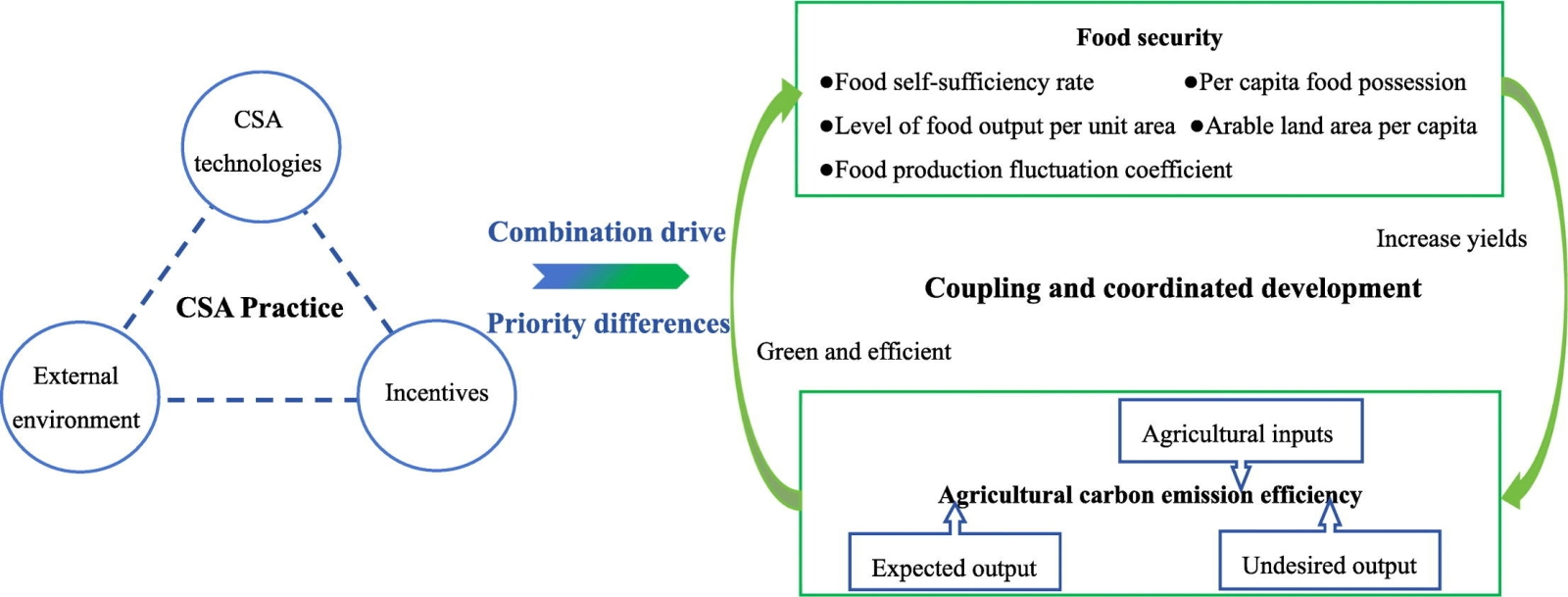Coupled coordination and pathway analysis of food security and carbon emission efficiency under climate-smart agriculture orientation
October 20, 2024 | Science of The Total Environment | Source |
Introduction: Researchers from Beijing Institute of Technology examine and compare the coordination between the two objectives of food security and agricultural carbon emission reduction through diverse configurations of climate smart agricultural (CSA) practices across 31 Chinese provinces from 2010 to 2021, using a coupled coordination model and dynamic qualitative comparative analysis (dynamic QCA).
Key findings: The configurations in CSA for different provinces are tailored to differing regional priorities, as well as diverse socioeconomic and ecological context. While some emphasize on water-saving irrigation with prioirty placed on food security, some emphasize on no-till farming with prioirty placed on emission reduction. The study suggests dry southwest regions to embrace no-till farming; water-scarce areas to adopt water-saving irrigation; the northeast region to adopt straw returning to fields. Applicable to all regions, there is a need to strengthen farmer training, policy guidance, and environmental education in promoting sustainable production practices. Governments must establish and refine agricultural ecological compensation mechanisms, adjust subsidy policies, and incentivize farmers for adopting eco-friendly technologies.
Graphical abstract:

Viewed Articles
October 20, 2024 | Science of The Total Environment | Source | Introduction: Researchers from Beijing Institute of Technology examine and compare the coordination between the two objectives of food se
Read More
February 28, 2024 | Agriculture, Ecosystems & Environment | Source | Introduction: Despite existing mitigation efforts, integrated approaches addressing system-wide emissions—including soil organic c
April 14, 2022 | Earth System Science Data | Source | Introduction: Traditional assessments have underestimated global GHG emissions from agrifood systems by focusing mainly on farm-level production a
March 13, 2023 | Nature Food | Source | Introduction: Food loss and waste (FLW) are major contributors to global GHG emissions, yet their full impact across the food system has been underexplored. A
January 15, 2022 | Atmosphere | Source | Introduction: Livestock both drives and suffers from climate change, contributing 14.5% of global GHG emissions while facing growing climate-induced stress. Re
October, 2023 | Agricultural Systems | Source | Introduction: Ireland’s beef sector, responsible for 37% of national greenhouse gas (GHG) emissions, presents key opportunities for climate mitigation






